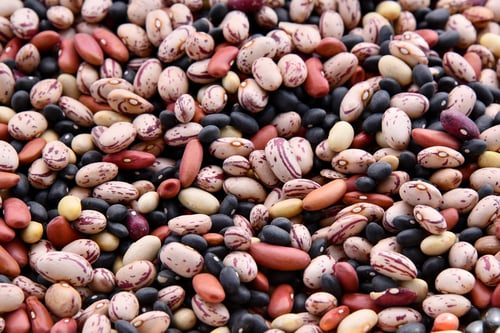 Did you know that about 2,200 Americans die from cardiovascular diseases every day? That's one every 40 seconds. Unfortunately, cardiovascular disorders currently claim more lives than all other types of cancer combined.
Did you know that about 2,200 Americans die from cardiovascular diseases every day? That's one every 40 seconds. Unfortunately, cardiovascular disorders currently claim more lives than all other types of cancer combined.
It makes sense that there’s a whole month dedicated to focusing on heart health (February), and a great place to start is our eating habits. It's been shown that beans and pulses have an outsized effect on our heart health. But before we explore these health benefits, let's unpack the difference between beans and pulses.
Pulse or bean?
An edible seed from a legume plant is known as a pulse. Beans are also pulses, but the number of bean types is so large that we often talk about them as their own separate group. Pulses vary nutritionally from green beans or wax beans, where the entire pod is eaten.
One of the best ways to maintain a healthy heart is through a healthy diet, and beans and pulses are the perfect foods to base your meals around. Here are some of the heart-health benefits you should consider.
Reduced LDL cholesterol
Legumes are great at combating high LDL cholesterol levels, aka "bad" cholesterol levels. In the digestive system, the soluble fiber in pulses such as chickpeas sticks to the LDL cholesterol. The fiber then takes the cholesterol along as it leaves the body, preventing the body from consuming the "bad" cholesterol. This also decreases LDL cholesterol levels in the blood, which leads to a lower risk of heart disease.
Low levels of HDL cholesterol ("good" cholesterol), high levels of triglycerides, and high blood pressure are other risk factors for heart disease, and pulses can help with all three. Beans contain alpha-linolenic acid, a form of omega-3 fatty acid, which raises HDL cholesterol and lowers triglycerides. Also, chickpeas are rich in magnesium and potassium, which can help maintain a healthy blood pressure level.
High in fiber
Pulses are incredibly high in fiber, supplying about a third of the fiber you need for the whole day with just one portion. That means they can help reduce the risk of heart disease, stroke, diabetes type 2, and bowel cancer. Their protein and fiber blend ensure that they are slowly digested, making you feel fuller for longer.
A 2016 study in Experimental and Therapeutic Medicine found that a serving of beans will make you feel fuller because the fiber content fills your stomach and induces a slower rise in blood sugar. That should stave off hunger longer and provide you with a steadier supply of energy.
Reducing the risk of heart disease
According to a report published in Advances in Nutrition, eating beans and other legumes lower the risk of cardiovascular disease, coronary heart disease, and high blood pressure. The study showed that those who ate most pulses reduced their risk of cardiovascular disease, coronary heart disease, and hypertension by as much as 10 percent.
Other ways to keep heart healthy
If it were up to us, eating beans and pulses would be the only thing you would need to stay heart-healthy. But according to the American Heart Association there are other things you should do to keep your ticker in tip top shape:
- Get some exercise
- Manage stress
- Practice mindfulness
- Connect socially
Ask any nine-year-old boy and they’ll agree: beans really are good for your heart. This American Heart Month, it’s comforting to know that better heart health is within everyone’s grasp. So get on your bike, call your friend, and fill your gut with beans and pulses!
